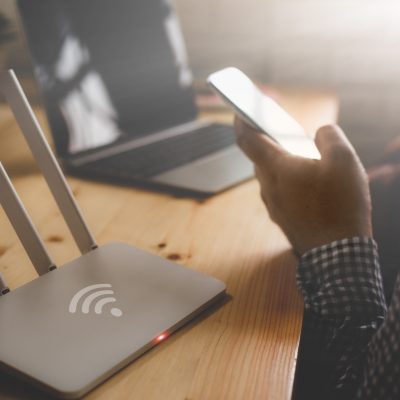Tips to boost your Wi-Fi reception


In September 2022 Xplornet became Xplore. Read more here.
Xplornet|January 21, 2019
A wireless network (WI-FI) router allows you to get online on multiple devices from anywhere within your home without a wired connection. Usually WI-FI routers work great, but on occasion it may seem like the Wi-Fi signal is weak or you may struggle to get connectivity in certain areas.
There are many factors that can impact your WI-FI router signal but they mainly fall into three categories:
- Placement of the Router
Because Wi-Fi is just that—wireless connection to the internet —distance, obstacles (such as walls, floors, and ceilings) and electronic interference can affect the WI-FI signal and slow down the network. - Technology interacting with Router
Software and hardware technologies are constantly changing, and how they interact with each other can affect the speed of your network. Applications like anti-virus programs or settings within your Wi-Fi router can cause your Wi-Fi signal to not be as strong as it can be. - Devices connected to the Router
Playing online games, conducting video chats, and streaming movies at the same time can take up a lot of bandwidth, and in turn can affect internet speed and access for everyone connected to that Wi-Fi network.
Within these three categories, there is a lot of variability because of the different types of routers and environments. Despite the differences in technology and location, there are some common tips that can help boost your WIFI signal:
Have you tried turning your router off?
The first tip is the easiest and it involves turning off you router and modem for at least 1 minute. It is called power cycling and can often flush out a bunch of problems that affect your speed.
Reposition your Router
WI-FI signal travels from a router in circular fashion, so if you place it near an outside wall, window or closet – some of the signal may be projecting outside your home or into a dead space. Consider placing your router in an open area in the middle of your house. It is also best practice to place the router higher on a shelf versus on the floor
Upgrade router to Dual Band model
Older routers only have 2.4GHz frequency, which means the signal is competing with many other devices that operate within that band like microwaves, cordless phones, baby monitors and even some alarm systems. Newer routers offer ‘dual’ bands – 2.4GHz as well as 5GHz frequency and provide faster speed and flexibility. Therefore, the dual-band router avoids connection issues or interferences and offers more stability.5GHz is likely to give you faster speeds because the 5GHz frequency can transfer more data. However, there is a tradeoff, the 2.4GHz frequency may still be better if you have a large home or particularly thick walls, as the wavelengths in 5GHz aren’t so good at penetrating barriers or traveling long distances.
Consider changing default router channels
Most modern routers are plug and play, meaning most individuals don’t fiddle much with the settings within the router after setting it up. This means many routers are working within the ‘default’ channels within the factory settings. If you have neighbours nearby who are also using default channels on their router, it could cause some congestion. There are apps like WI-FI Analyzer that allow you to scan the WI-FI channels in your area and determine those with less congestion. Changing your channel settings isn’t hard but does require going into the settings of the router. There are some good ‘how to change your router channel’ videos available to walk you through the process.
Consider purchasing the latest router technology
If you’re still using an older 802.11g or 802.11n router known as Wireless G” or “Wireless N,”—it may be time to upgrade to something new. The newer 802.11 AC routers allow for multiple inputs and outputs leading to a much better overall performance. Many new devices may already support this standard, so a new router will help take better advantage of their capabilities.
At Xplornet, we offer a Wi-Fi router (and Whole Home Wi-Fi) that has been configured and tested to work effectively on our LTE and Satellite networks. Additionally, our service representatives can walk you through updating the Wi-Fi router settings to optimize its performance in your home. Visit our website or contact us to learn more about this option. You can also see Internet Packages available at your home!


